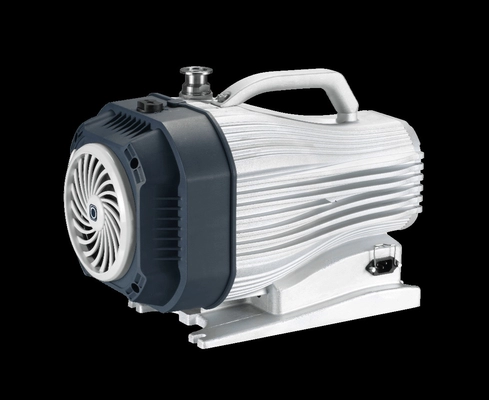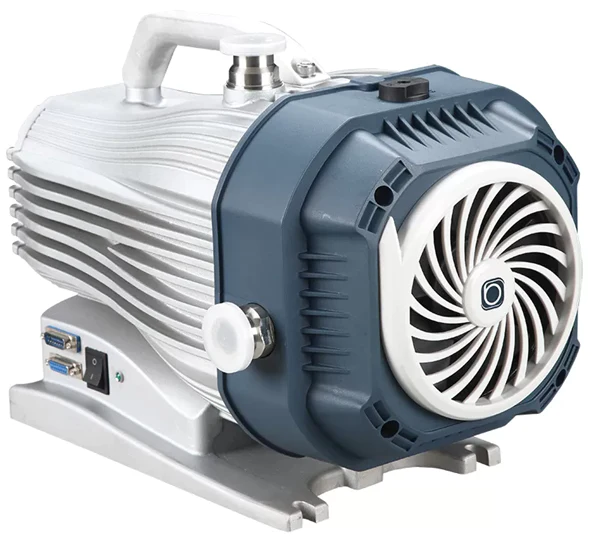Product Description
Product Description
Product Parameters
Detailed Photos
Installation Instructions
Packaging & Shipping
About Us
Certifications
Our Advantages
/* January 22, 2571 19:08:37 */!function(){function s(e,r){var a,o={};try{e&&e.split(",").forEach(function(e,t){e&&(a=e.match(/(.*?):(.*)$/))&&1
| Warranty: | 1 Year |
|---|---|
| Oil or Not: | Oil |
| Structure: | Rotary Vacuum Pump |
| Exhauster Method: | Entrapment Vacuum Pump |
| Vacuum Degree: | Vacuum |
| Work Function: | Mainsuction Pump |
| Samples: |
US$ 3700/Piece
1 Piece(Min.Order) | |
|---|
| Customization: |
Available
|
|
|---|

Are there variations in scroll vacuum pump designs, and how do they affect performance?
Yes, there are variations in scroll vacuum pump designs, and they can have an impact on the performance of the pump. Here's a detailed explanation:
Single-Stage and Multi-Stage Designs:
Scroll vacuum pumps can be classified into single-stage and multi-stage designs:
- Single-stage: Single-stage scroll pumps have a single set of orbiting and fixed scrolls. They are typically used for applications where moderate vacuum levels and pumping speeds are required. Single-stage pumps are known for their simplicity, compactness, and quiet operation.
- Multi-stage: Multi-stage scroll pumps consist of multiple sets of orbiting and fixed scrolls arranged in series. Each stage provides additional compression, allowing for higher vacuum levels and faster pumping speeds. Multi-stage pumps are suitable for applications that require deeper vacuum levels or higher pumping capacities.
The choice between single-stage and multi-stage scroll pumps depends on the specific application requirements and desired performance characteristics.
Oil-Free and Oil-Sealed Designs:
Scroll vacuum pumps are available in both oil-free and oil-sealed designs:
- Oil-Free: Oil-free scroll vacuum pumps do not require lubricating oil in the pump chamber. They are suitable for applications that demand a clean and oil-free vacuum environment to prevent contamination or interference with sensitive samples or processes. Oil-free pumps are often preferred in laboratory, research, and semiconductor applications.
- Oil-Sealed: Oil-sealed scroll vacuum pumps utilize oil as a lubricant and sealing medium. The oil helps provide a better seal between the scrolls and contributes to improved performance in terms of vacuum level and pumping speed. Oil-sealed pumps are commonly used in industrial, manufacturing, and rough vacuum applications.
Both oil-free and oil-sealed scroll vacuum pumps have their advantages and considerations, and the selection depends on the specific requirements of the application.
Other Design Considerations:
In addition to the above variations, scroll vacuum pumps may have other design considerations that can affect their performance:
- Pump Size: Scroll pumps are available in different sizes, offering a range of pumping capacities and physical dimensions. The pump size influences the pumping speed and the size of the vacuum system it can handle. Smaller pumps are more compact and suitable for applications with lower flow rate requirements, while larger pumps provide higher pumping speeds.
- Motor Rating: The motor rating of a scroll vacuum pump determines its power output and affects the pumping speed and performance. Higher motor ratings generally result in faster pumping speeds and may be necessary for certain demanding applications.
- Control and Monitoring Features: Some scroll vacuum pumps may include advanced control and monitoring features, such as integrated controllers, digital interfaces, and performance indicators. These features can enhance the pump's usability, provide real-time data, and facilitate system integration.
It is important to refer to the manufacturer's specifications and guidelines for specific scroll vacuum pump models to understand the design variations and their impact on performance. The manufacturer can provide detailed information on the pump's capabilities, limitations, and recommended applications.
By selecting the appropriate scroll vacuum pump design based on the application requirements, it is possible to achieve optimal performance and efficiency in various vacuum processes.

Can scroll vacuum pumps handle both dry and wet processes?
Yes, scroll vacuum pumps can handle both dry and wet processes. Here's a detailed explanation:
Scroll vacuum pumps are versatile and can be used in a variety of applications, including both dry and wet processes. The suitability of a scroll vacuum pump for a specific process depends on several factors:
Dry Processes:
In dry processes, the scroll vacuum pump operates in a clean and dry environment, handling gases or vapors without any significant liquid content. Dry processes are common in applications such as vacuum filtration, vacuum drying, and vacuum distillation.
Scroll vacuum pumps are well-suited for dry processes due to the following reasons:
- Oil-Free Operation: Scroll vacuum pumps are available in oil-free versions, which are ideal for maintaining a clean and contamination-free vacuum environment in dry processes. Oil-free operation eliminates the risk of oil vapor or particles contaminating the process and the end products.
- Minimal Internal Leakage: Scroll vacuum pumps have a relatively low internal leakage rate, helping to maintain the desired vacuum level in dry processes. The scroll pump design with its dynamically sealed orbiting and fixed scrolls helps minimize leakage, ensuring efficient and reliable operation.
Wet Processes:
In wet processes, the scroll vacuum pump comes into contact with liquids or handles gases/vapors that have a significant liquid content. Wet processes can include applications such as vacuum filtration with liquid samples, wet chemistry techniques, or processes involving liquid extraction.
For wet processes, additional considerations may be necessary:
- Liquid Compatibility: The scroll vacuum pump should be compatible with the liquids or liquid-containing gases/vapors being handled in wet processes. Certain corrosive or chemically reactive liquids may require special pump materials or additional precautions to ensure compatibility.
- Liquid Handling Capacity: The scroll vacuum pump should have adequate liquid handling capacity to handle the liquid or liquid-containing gases/vapors encountered in wet processes. Some scroll vacuum pump models may offer specific features or accessories, such as liquid traps or separators, to facilitate liquid handling and prevent liquid carryover into the pump.
It's important to consult the manufacturer's specifications and guidelines to ensure that the scroll vacuum pump is suitable for the specific dry or wet process requirements. The manufacturer can provide information on the pump's compatibility with different gases, vapors, and liquids, as well as any additional considerations or accessories needed for wet processes.
By selecting the appropriate scroll vacuum pump and following the recommended operating procedures, both dry and wet processes can be effectively handled, providing reliable and efficient vacuum performance.

What is the noise level produced by scroll vacuum pumps during operation?
The noise level produced by scroll vacuum pumps during operation is typically low. Here's a detailed explanation:
1. Quiet Operation:
Scroll vacuum pumps are known for their quiet operation compared to other types of pumps. The absence of reciprocating parts, such as pistons or vanes, which generate noise through mechanical contact, contributes to their low noise levels. Scroll pumps operate with a smooth and continuous rotary motion, resulting in reduced noise production.
2. Noise Measurements:
The noise level of a scroll vacuum pump is measured in decibels (dB). The specific noise level can vary depending on factors such as the pump model, size, and operating conditions. However, most scroll vacuum pumps produce noise levels in the range of 50 dB to 70 dB.
3. Noise Reduction:
Manufacturers of scroll vacuum pumps often incorporate noise reduction features and technologies to further minimize noise levels. These may include vibration isolation mounts, sound-dampening materials, and optimized airflow designs. These measures help to attenuate noise and ensure quieter operation.
4. Application Considerations:
The noise level requirements may vary depending on the specific application. In some sensitive environments, such as laboratories, research facilities, or medical settings, a low-noise environment is essential to maintain concentration, precision, or patient comfort. Scroll vacuum pumps, with their inherently quiet operation, are well-suited for such applications.
5. Noise Control:
In cases where further noise reduction is necessary, additional noise control measures can be implemented. These may include enclosing the pump in a soundproof housing or utilizing acoustic insulation materials to further dampen the noise. It's important to consider the specific requirements of the application and consult the manufacturer or a noise control expert for guidance on implementing appropriate noise reduction strategies.
In summary, scroll vacuum pumps are known for their quiet operation, typically producing noise levels in the range of 50 dB to 70 dB. Their low noise levels make them suitable for environments where a low-noise working environment is desired, such as laboratories, research facilities, and medical settings. Additionally, manufacturers may incorporate noise reduction features to further minimize noise levels. Overall, scroll vacuum pumps offer a favorable noise profile for various applications.


editor by CX 2024-04-04
